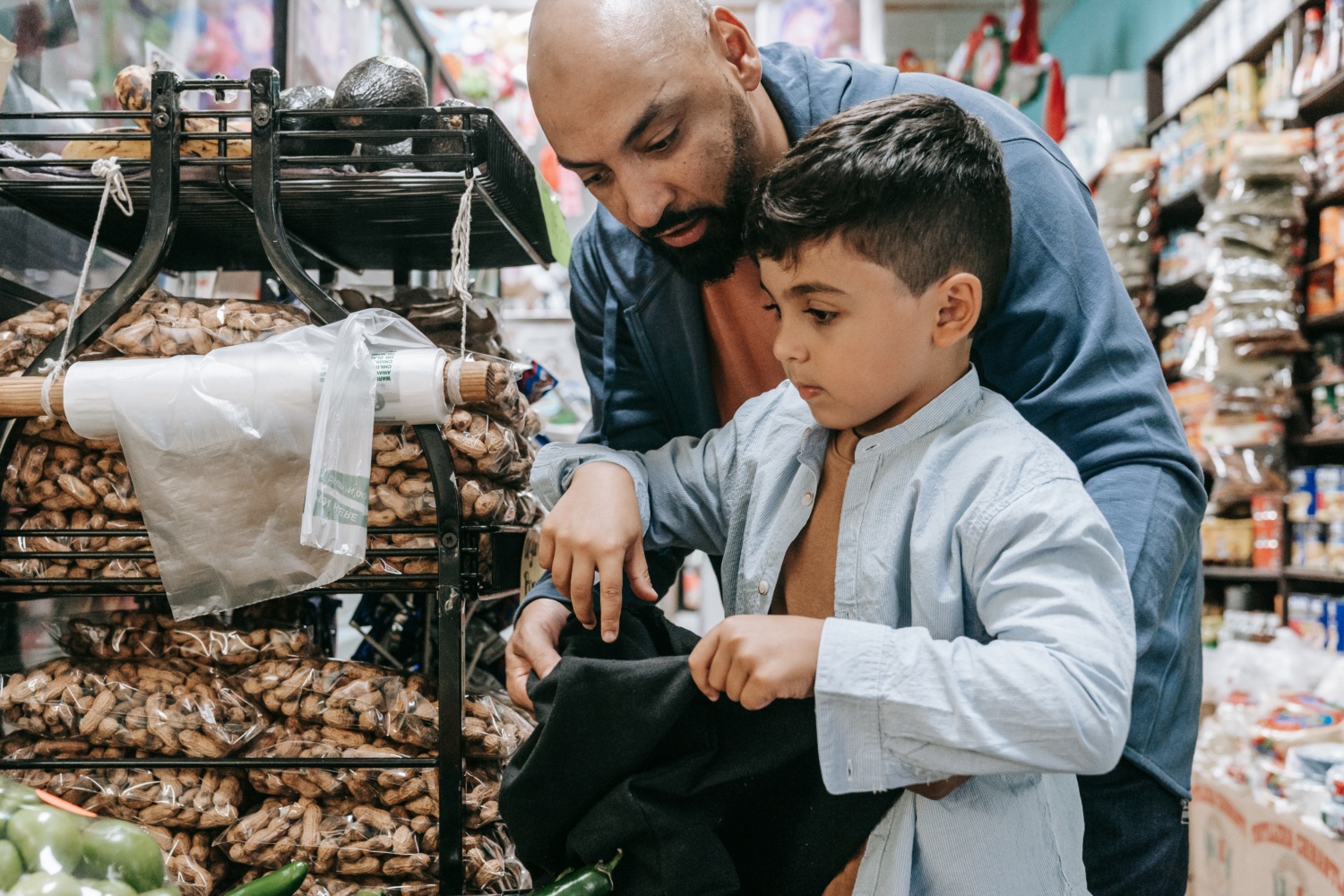
The News About Hunger Revealed Increased Support for Government Assistance During COVID. Will it Stay That Way?
- Heather Gehlert
-
Issues
Nutrition & Food Security -
Expertise
Media Advocacy & Communications -
Programs
Berkeley Media Studies Group

Heather Gelhert with PHI’s Berkeley Studies Media Group provides an analysis of how media coverage of food insecurity changed during the COVID pandemic and offers lessons learned on how the conversation around hunger can continue through an equity lens.
I grew up in the rural Midwest well below the federal poverty line. Although we lived in a farming community, my parents had to get creative to make sure we always had a meal on the table. Still, they never sought food assistance or signed me up for free school lunches because they worried the stigma would lead to bullying. My parents weren’t wrong to be concerned: Degrading stereotypes about people on welfare were a fixture of dominant U.S. culture during my childhood in the 80s — and once you’ve heard them enough, you start to believe them. So, my mom and dad, like many families facing similar circumstances, tried to create distance between ourselves and “other” poor people. We never talked openly about the “us-versus-them” narrative, but we feared it. Internalized it. Felt its shame.
In 2020, widespread changes wrought by the pandemic began to chip away at that shame-filled narrative. As our country’s botched response to the virus threw millions of households into financial hardship, leaving people unable to afford basic necessities like food and rent, the longstanding “us-versus-them” mentality lost a lot of its power. Conversations across social media started to reflect this with popular memes like “We are in this together” and “We are not all in the same boat, but we are in the same storm.” We saw this shift mirrored in traditional news coverage: BMSG’s research on news from the first year of the pandemic showed that many stories evoked empathy for food assistance recipients, and framed them as “people like us.” We also found that there were no articles about food stamp fraud and abuse, topics that were prevalent before the pandemic.
More recent research shows that this change in news coverage continued in the second year of the pandemic. To learn more about the changes unfolding, BMSG and our partners at the Collaborative on Media and Messaging for Health and Social Policy (COMM) analyzed broadcasts and stories about hunger that aired or were published between Jan. 1, 2021 and Dec. 31, 2021. The results confirmed our hunch: Stories about food stamp fraud were still rare, with references to such allegations appearing in only 6% of print articles and 3% of TV stories.
Instead, our team found overwhelmingly positive portrayals of government, increased calls for a robust government role in alleviating hunger, and strong appeals to empathy. Families, in particular, were framed as needing food assistance and were mentioned in over 80% of print articles and almost half of TV clips in the context of emergency electronic benefit transfer (EBT) or providing school lunches during the pandemic. Media outlets continued to center government action in their stories, highlighting President Biden’s executive orders that expanded food assistance and increased the amount of benefits that people were eligible for.
The narrative change was significant, giving advocates hope for a stronger social safety net over the long term. Finally, the public conversation around food assistance had less stigma. It seemed clearer that there is no them — it was always just us. But, as the COVID emergency ends and hunger-related benefits expire under the USDA’s Food and Nutrition Service, will shame and stigma return to the conversation?

Finally, the public conversation around food assistance had less stigma. It seemed clearer that there is no them — it was always just us.Heather Gehlert
Senior Manager, Communication and Digital Strategy, PHI’s Berkeley Media Studies Group
On one hand, headlines tell us that the hunger crisis continues (with 32 million people already receiving less food assistance), that older Americans are especially vulnerable, and that food benefit reductions are putting extra pressure on local food banks. On the other hand, we are already seeing conservative policy proposals to retract recent program expansions making the news, with headlines like:
- 1 in 4 could lose food stamps under a GOP bill. These states would be hit hardest;
- GOP eyes new work requirements for millions on Medicaid, food stamps; and
- Cuts to SNAP benefits will push millions over the hunger cliff.
Without actively steering the narrative, these conservative proposals could shift news coverage about food assistance back toward a more stigmatized and less government-focused conversation about the programs — one that demonizes poor people and people of color. Fortunately, there are several steps advocates can take to advance their policy goals by communicating strategically through effective message development and delivery:
Lead with values.
If we want news outlets to maintain a broad frame that includes government accountability in stories about food assistance, we must start with a point of agreement: our values. As President Biden said in a TV clip that BMSG and COMM researchers analyzed, “These are not the values of our nation. We cannot and will not let people go hungry.” Values create space to approach the issue from a place of strength and optimism, rather than weakness or cynicism. In a time of great political division, many people are eager for messages that elevate interconnection and solidarity.
Use an equity lens.
An inclusive narrative about food assistance benefits everyone, and this is especially true for low-income people and communities of color. However, our study found that racial equity was mostly absent from coverage. Just as frontline and essential workers — who are disproportionately people of color — were critical to our country’s ability to weather the pandemic, they are also critical to our ongoing recovery. The people who grow our food and keep our grocery stores stocked ought to be able to access food themselves. Messages about hunger should make clear who would be disproportionately harmed by cuts to our social safety net: low-income families, people of color, and seniors.
Pitch opinion pieces.
Although researchers found that the overall narrative about food assistance was positive toward recipients during the start of the pandemic, opinion coverage was relatively rare overall. Advocates have an opportunity to write and pitch more guest commentaries, letters to the editor, or even “owned media” like blogs. Opinion pieces remain a strong way to reach policymakers — an important target audience in conversations surrounding hunger.
Center the role of government.
When government is mentioned in news about public health issues, it is sometimes framed as an inept, bumbling bureaucracy, which may make it harder for audiences to believe that it can also be part of the solution. However, media coverage around food assistance during the pandemic instead centered the government as taking action to solve widespread food insecurity. And in the real world, we saw the impact of government action: hunger was poised to soar early in the COVID-19 pandemic, but Supplemental Nutrition Assistance Program (SNAP) structure and policy changes made it easier for families to access SNAP during this period, and hunger stayed level in 2020.
As the pandemic fades into the background, it is more important than ever to highlight stories where government actions have been successful in helping people who receive food assistance. Advocates can continue to frame government actors and agencies as a necessary part of the solution — and be specific about who should act and what they should do. If advocates keep the onus for addressing hunger on the government, we hope that accountability and systemic solutions will continue to be part of the narrative, challenging the traditional news stories that evoked individual responsibility and “bootstrapping” and an emphasis on individualized causes and solutions that we often saw in news before the pandemic.
Our country is stronger when everyone is able to feed themselves and their families. Narratives about hunger during the pandemic elevated this truth, but without action, we risk reverting back to us-versus-them rhetoric and food assistance policies based on a scarcity mindset and shame. Advocates can use strategic communication and opinion space to show how current proposals that would increase hunger are out of touch with our values. Although Biden has declared the COVID emergency over, conversations about fair, equitable ways for the government to address food insecurity shouldn’t be. To ensure that all families can thrive, the U.S. needs to bring the more expansive nutrition benefits of the pandemic era into the future, and leave the kind of hunger-related stigma my family faced in the past.
Help spread the word: Share on social
- See and share on Instagram:
View this post on Instagram
Hina Mahmood contributed to this blog. Thanks to the Robert Wood Johnson Foundation for supporting the research on which it is based. The views expressed here do not necessarily reflect the views of the foundation.
Originally published by Berkeley Media Studies Group
Work With Us
You change the world. We do the rest. Explore fiscal sponsorship at PHI.
Support Us
Together, we can accelerate our response to public health’s most critical issues.
Find Employment
Begin your career at the Public Health Institute.


